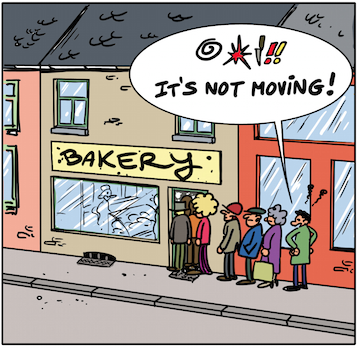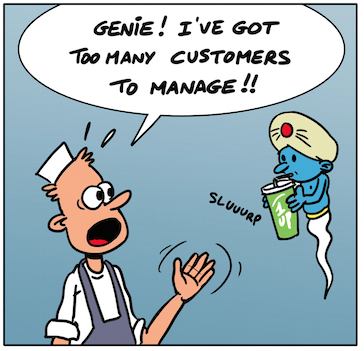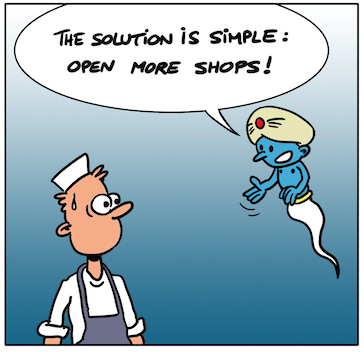-
Most Enterprises like to grow
We sometimes hear enterprise bosses state that they would like their Enterprise to stay small, to remain a human-scale enterprise: "small is beautiful"!
But this desire to stabilize the enterprise is often an elegant way of admitting one's inability to grow.
For others, it is a desire to not have to manage staff or to reach the social thresholds that impose constraints on the Enterprise. Rare are the Enterprises who actually display a non growth strategy.
Most Enterprises want to grow.
- First, it is recognition of being successful and a source of pride for the employees.
- It is also a guarantee of confidence for the customers.
- Finally, it is a question of critical size.
The Operational Resources are generally proportional to the volume of the Operations, whereas the Transformation Resources are mainly linked to the complexity of the Models. If an Enterprise decides to spend 10% of its Operational revenue on Transformation investments, the strike capacity of the large enterprise will be far more important. A simple example is that of an advertising campaign which aims to build an Image: the impact will be far greater for the large enterprise.
-
The simplest growth is one that does not change the Model
The simplest growth is one that does not change the Model and only asks for an increase in Resources. It is therefore not a question of establishing partnerships that will change the Operation Model, or creating a new Product line: we only have to use the existing Model across a larger territory.
Management Processes need to be adapted to territory growth, in particular when they are a substitute for control carried out previously by on-site presence.
-
International Approach
Enterprises nowadays think "Global".
An international approach can be concerned with the Usage, Production or Distribution Processes
- Good ideas circulate quickly and are rapidly copied,
transport costs less and less (containers, increasingly
efficient engines, the best optimization of transport
thanks to information systems): there is a fundamental
trend towards the "globalization" of Products. Products
are less and less dependent on the locality and make
geographic expansion increasingly easy. If the Product can
be transported, the Customer
can Use it in a different country to the one it
was bought in: the product just has to be adaptable to
local standards (electrical plugs for example).
- We can Produce in different countries: if the
Product Models are the same, the production Processes are
also the same. We can dynamically split the Production
between the different Organizational Units in
order to optimize the use of our resources.
- We can Distribute in different countries: the
Product Models sometimes have to be adapted to take
regulatory and cultural specificities into account (e.g.,
building products). The digital revolution and the
possibility to sell direct on line, and therefore to free
ourselves from physical distribution networks, have
drastically changed the way we regard geography and
territory. What counts now is the logistics around stocks
and flows (e.g., Amazon). For fresh produce, like bread,
the context is different.
Remark: in all cases, the local Resources management Processes may need to be adapted, especially Human Resources management. - Good ideas circulate quickly and are rapidly copied,
transport costs less and less (containers, increasingly
efficient engines, the best optimization of transport
thanks to information systems): there is a fundamental
trend towards the "globalization" of Products. Products
are less and less dependent on the locality and make
geographic expansion increasingly easy. If the Product can
be transported, the Customer
can Use it in a different country to the one it
was bought in: the product just has to be adaptable to
local standards (electrical plugs for example).

The story of George the Baker is made available under the terms of the
Creative Commons Attribution - NoDerivatives 4.0 International license.



